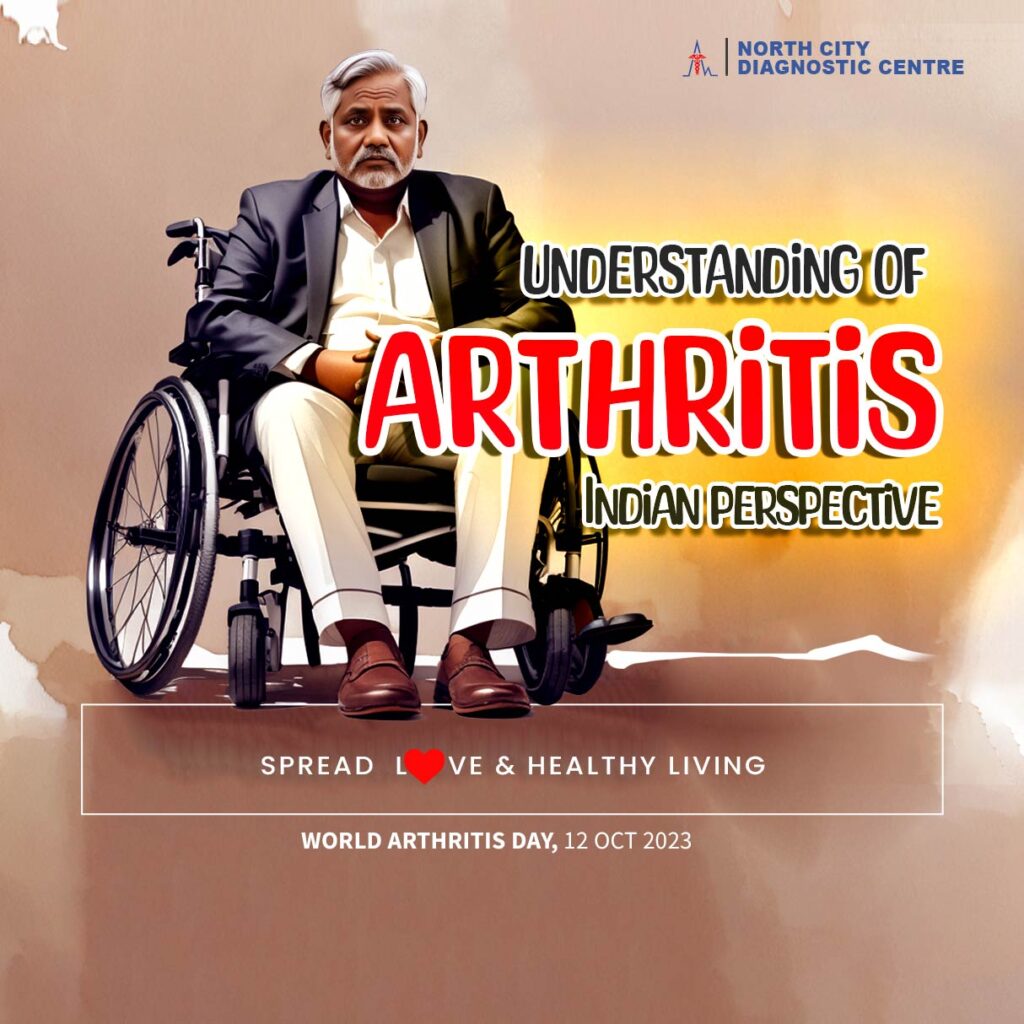
Menu
Knee pain, back pain, joint pains sometimes with inflammation are common day to day troubles most people face every day. We purchase pain ointments and pain killers just like groceries. We blame it on everything possible and sometimes even thread on absurdity. Many of us don’t take stairs or foot over bridges. We even avoid metro travel to escape climbing stairs. Blame is all on the pain that become part of our lives. But what we miss out on is the cause and how we can alleviate.
Joint pain is not normal. It could be because of arthritis. You would be shocked to know that arthritis, especially knee arthritis, is one of the top causes of physical disability in India. The occurrence of arthritis in India is way higher than the western nations. Though elderlies are more prone to but that does not leave the younger age group in the safe zone.
Understanding of Arthritis in India needs to be profound as more and more citizen are being affected by the disease. Due to abrupt lifestyle changes in the new normal it is no longer confined to older populace but affecting the younger generations as well. We have incidentally taken the privilege of publishing this article on World Arthritis Day.
In India, Osteoarthritis is the second most common rheumatologic problem and it is the most frequent joint disease in the country with a prevalence of 22% to 39%.

“Arthritis happens to anyone4 at any age. Don’t let that happen.”

Please choose an option to the questions below:
Arthritis is the inflammation and tenderness of one or more joints, a condition that causes immense pain and stiffness, more prevalent among older people. Let us begin our understanding of arthritis with the two most prevalent types,
Did you know that osteoarthritis is the most widespread type of arthritis, impacting millions of individuals worldwide?
It happens when the protective cartilage that lines the ends of the bones deteriorates over time. While osteoarthritis can harm any joint, it typically affects joints in your hands, knees, hips, and spine. Although the damage to joints cannot be reversed, osteoarthritis symptoms can usually be handled. Staying active, maintaining a healthy weight, and receiving certain treatments may slow the progression of the disease and help alleviate pain and enhance joint function.
Age, gender (women), extra weight, joint injuries, repetitive stress, genetics, bone deformities, and certain metabolic diseases can increase the risk of osteoarthritis.
Symptoms:
It an autoimmune disease that targets joint linings.
Stress and environmental triggers can precipitate the onset of the disease. About 5% of first-degree relatives are at risk of developing RA. Cigarette smoking, coffee, and oral contraceptive pills appear to increase the risk of its development. Early diagnosis is the key to prevent deformities with appropriate management. Delay in diagnosis is the leading cause of functional disability and reduced quality of life. Most cases of permanent disability due to RA is reported among women.
Symptoms:
Signs and symptoms of rheumatoid arthritis may include:
The severity and frequency of rheumatoid arthritis signs and symptoms can vary, with periods of heightened disease activity referred to as flares, alternating with periods of relative remission characterized by diminished swelling and pain.
Throughout the course of the condition, rheumatoid arthritis can lead to joint deformities and misalignment.
Ankylosing spondylitis – It is alternatively referred to as axial spondyloarthritis, manifests as an inflammatory ailment that gradually leads to the fusion of certain vertebral bones in the spine. This fusion restricts spinal flexibility and can result in a stooping posture. If the ribs are affected, it can be challenging to take deep breaths.
Gout –
It is a prevalent and intricate form of arthritis, can affect individuals across all demographics. It is characterized by abrupt and intense episodes of pain, swelling, redness, and tenderness in one or multiple joints, most commonly affecting the big toe.
Juvenile idiopathic arthritis –
formerly known as juvenile rheumatoid arthritis, is the most prevalent type of arthritis in children below the age of 16. This condition can cause persistent joint pain, swelling, and stiffness. The duration of symptoms varies, ranging from a few months to several years. Certain types of juvenile idiopathic arthritis can give rise to significant complications, including growth impairments, joint damage, and inflammation of the eyes.
Psoriatic arthritis –
It is an arthritic condition that affects individuals who also have psoriasis—a skin disease characterized by red patches topped with silvery scales. In most cases, psoriasis precedes the onset of psoriatic arthritis by several years. However, for some individuals, joint issues may arise concurrently with or before the appearance of skin patches.
Reactive arthritis –
It is a condition characterized by joint pain and swelling triggered by an infection in another part of the body, most commonly the intestines, genitals, or urinary tract. The knees, ankles, and feet are the primary targets of this condition. Inflammation can also affect the eyes, skin, and the urethra—the tube responsible for carrying urine out of the body. Reactive arthritis was previously referred to as Reiter’s syndrome.
Septic arthritis –
It is a painful joint infection that can occur when germs travel through the bloodstream from another area of the body. Alternatively, it can result from a direct introduction of germs into the joint through a penetrating injury, such as an animal bite or trauma.
Thumb arthritis –
It is a prevalent condition that develops with age, primarily affecting the joint at the base of the thumb known as the carpometacarpal (CMC) joint. Cartilage erosion in this joint leads to severe pain, swelling, reduced strength, and limited range of motion. Basic tasks such as turning doorknobs and opening jars become challenging.
Avail specialized Health check-up and screening. North City Diagnostic Centre offers state-of-the-art health check-up and screening packages at affordable prices. Call 
Understanding of arthritis begins with admitting the epidemic nature of the disease. More and more individual gets engulfed in this life changing disease. Affecting not just their life but that of their family and their dreams.
In the early 1990s, arthritis was predominantly associated with old age, with limited data and awareness available. However, even then, there were indications of an impending epidemic on the horizon.
As India entered the 21st century, lifestyle changes began to negatively impact health. Sedentary habits contributed to rising arthritis cases, affecting not only the elderly but also younger adults.
The period from 2010 to 2019 witnessed a surge in arthritis diagnoses. According to a study, the number of individuals with Osteoarthritis increased from 23.46 million in 1990 to a staggering 62.35 million in 2019. Currently, approximately 1% of the population is afflicted with Rheumatoid arthritis, with some facing the prospect of permanent disability. Healthcare providers have witnessed a significant rise in patients from diverse age groups and backgrounds, leading to the situation being officially recognized as a “health crisis.”
The onset of COVID-19 and the New Normal era had an unforeseen impact on arthritis in India. Lockdowns, work from homes, online facilities, home deliveries, mobile addiction, binging, and reduced physical activity worsened conditions for existing patients while simultaneously catalyzing new cases.
If you’ve already been diagnosed with a heart condition, regular screenings help monitor the disease’s progression and the effectiveness of your treatment.
Blood tests are an integral part of the diagnosis and understanding of arthritis. Parameters like erythrocyte sedimentation rate (ESR), C-reactive protein (CRP), and Complete Blood Count (CBC) can hint at an inflammatory condition, often indicative of certain types of arthritis.
Other blood cultures to diagnose Rheumatoid Factor include, anti-CCP, Antinuclear Antibody, Creatine Kinase, Cryoglobulins, and HLA-B27.
X-ray imaging serves as a fundamental tool for detecting structural changes in the joints. However, it is not useful in the early stages of the disease.
Ultrasound offers real-time images of soft tissue structures around the joints. This technology has gained popularity for its non-invasive nature and the ability to detect early signs of inflammation and structural changes.
In some cases, a direct examination of the joint through arthroscopy may be recommended. Though invasive, it allows for a highly detailed inspection of the joint, aiding in both diagnosis and treatment planning.
Extracting and analyzing synovial fluid from an affected joint can provide biochemical markers for arthritis. This test helps in differentiating between various forms of arthritis, making it easier for healthcare providers to tailor treatment strategies.
Now you that you have developed a little understanding of arthritis as a life changing disease, you will realize it is fundamental to diagnose the disease early. When it comes to arthritis, the old adage, “Time is of the essence,” couldn’t be more accurate. Early detection plays a pivotal role in dictating the course of the disease, ultimately affecting the patient’s quality of life.
Prompt diagnosis allows for immediate initiation of treatment plans. Medications like Nonsteroidal Anti-Inflammatory Drugs (NSAIDs) and Disease-Modifying Anti-Rheumatic Drugs (DMARDs) can be more effective when administered early.
When arthritis is detected early, implementing lifestyle changes such as exercise regimes and dietary modifications can be extremely effective. These strategies often reduce the need for aggressive medical treatments down the line.
Early detection sets the stage for active disease monitoring. Regular check-ups and diagnostic tests help in adapting treatment plans as required, ensuring optimal management of the condition.
Early diagnosis can also have a positive psychological impact. Knowing what you’re up against allows for mental preparation, better stress management, and a more proactive approach to disease management.
At North City Diagnostic Center we offer personalized testing schedule that aligns with your medical history and risk factors. Consistent monitoring can be invaluable for early detection and effective management of arthritis. It’s not just about how often you test but making sure that the tests are aligned with your overall health profile for maximum benefit.
#ArthritisInIndia #EarlyDetectionMatters #HealthcareIndia #ArthritisDiagnosis #JointHealth #RheumatologyIndia #ChronicConditions #MedicalGuide #KnowArthritis #ManageArthritis #HealthFirst #NDC #NorthCityDiagnostic #DiagnosticServices #UnderstandingofArthritisIndianPerspective #WorldArthritisDay
35-A ,Canal West Road
Near Gouri Bari Bus Stop
Kolkata – 700004.
Local: +91 33 6605 0888